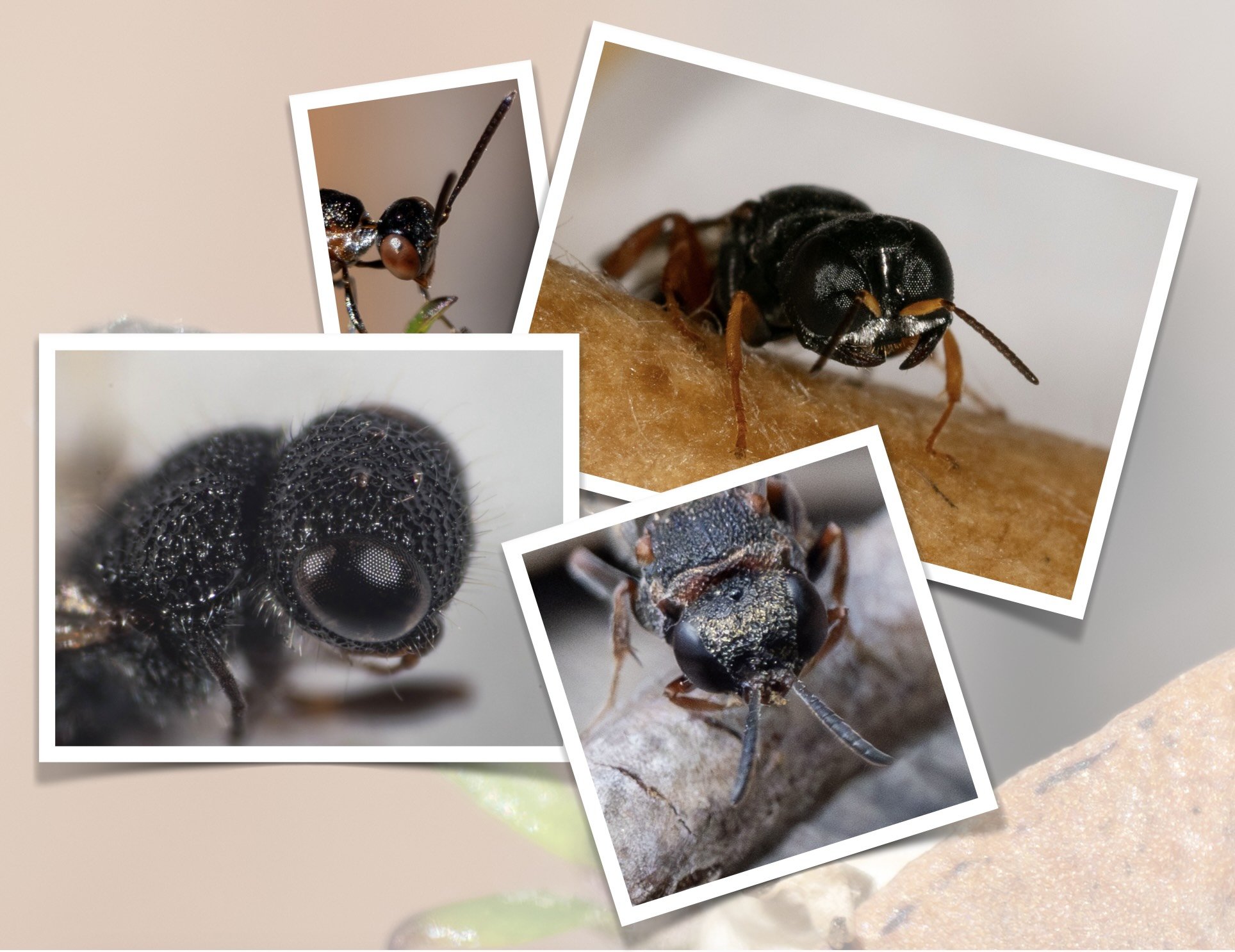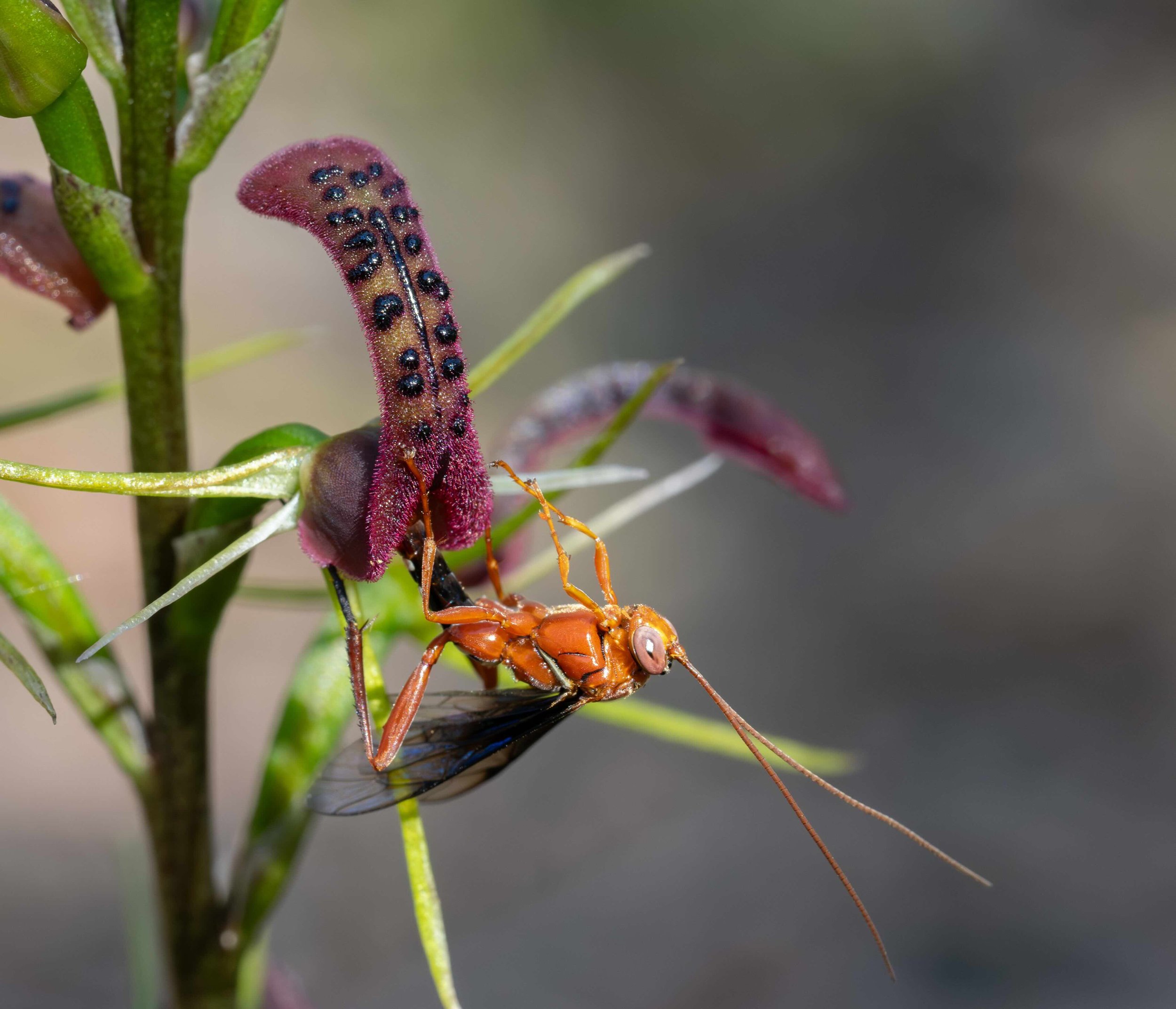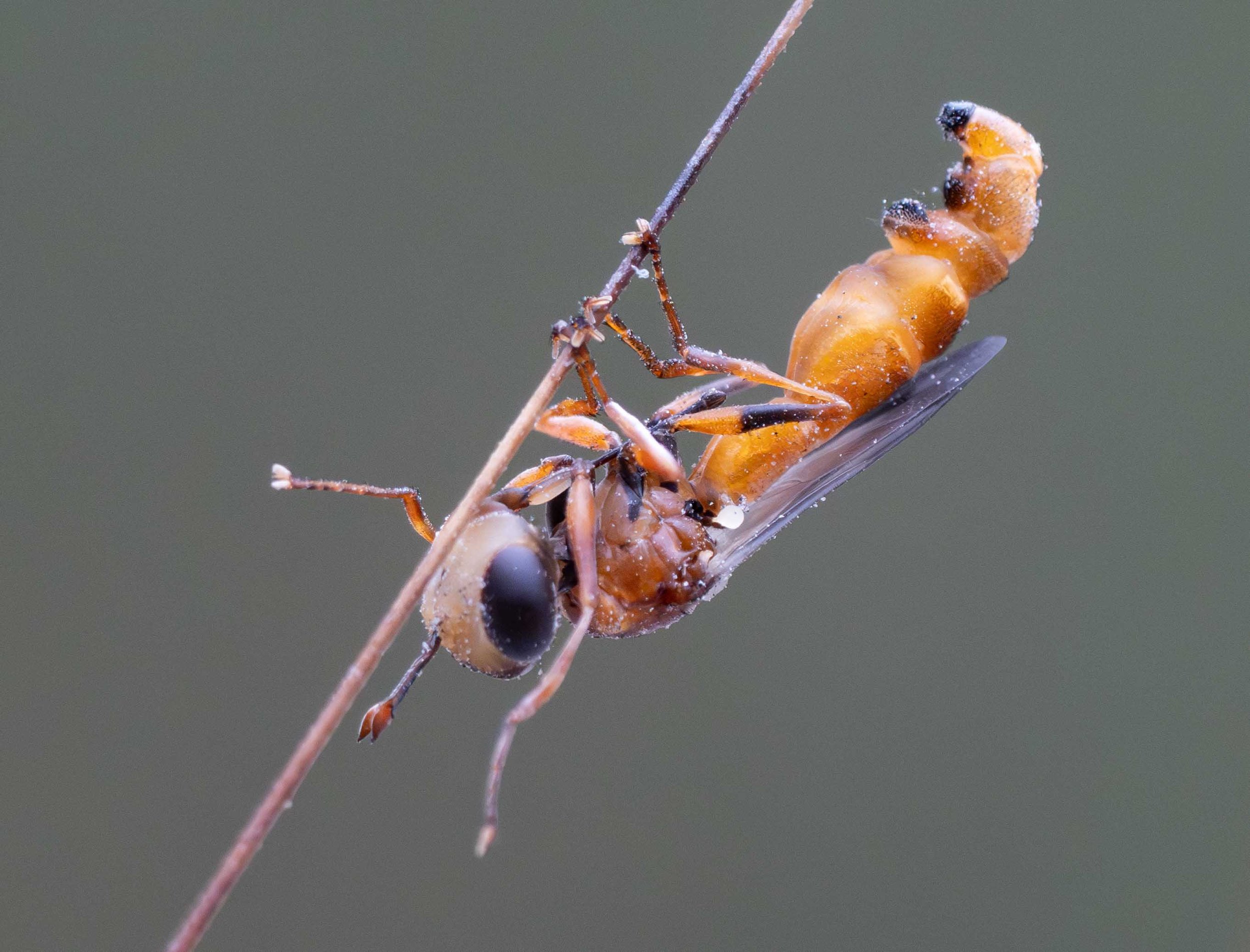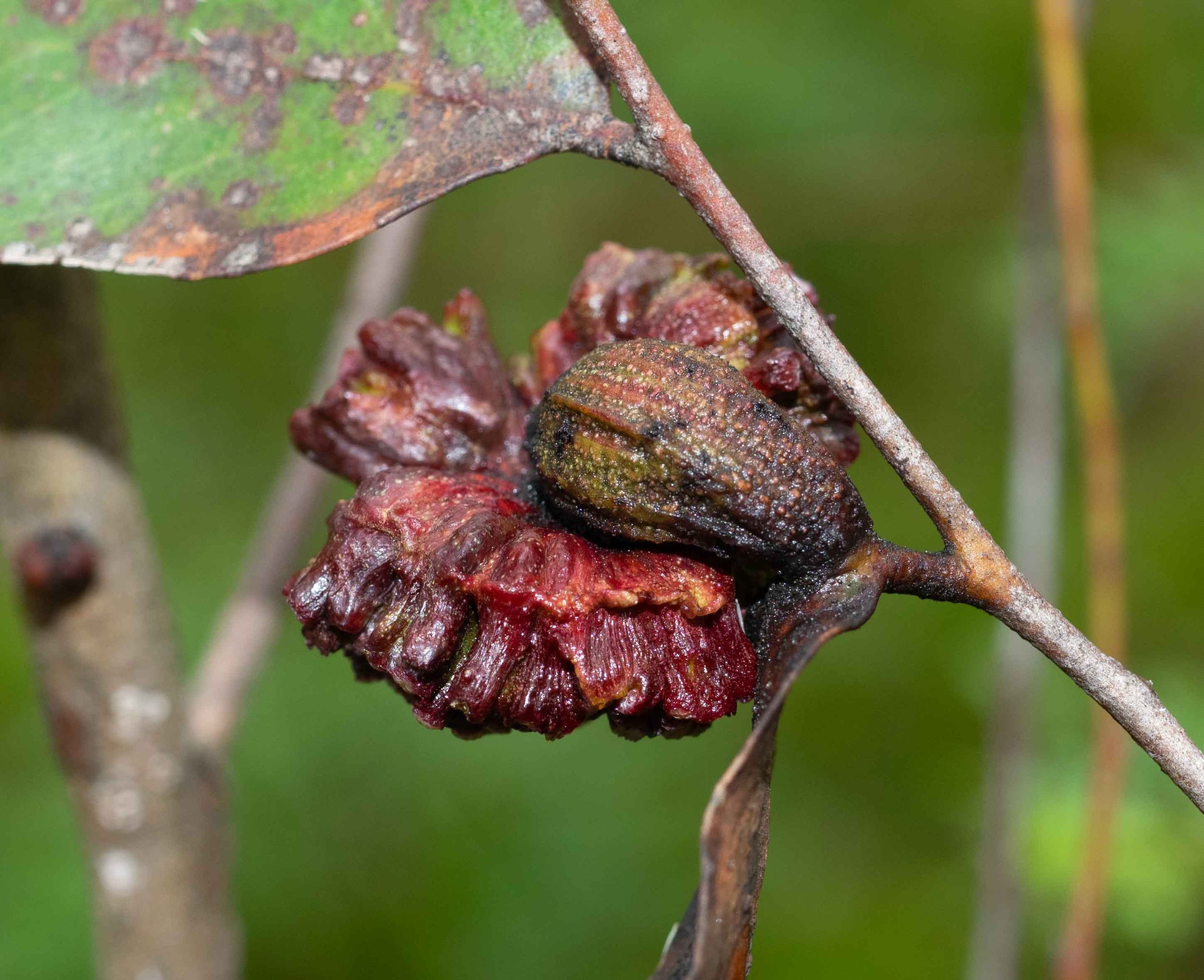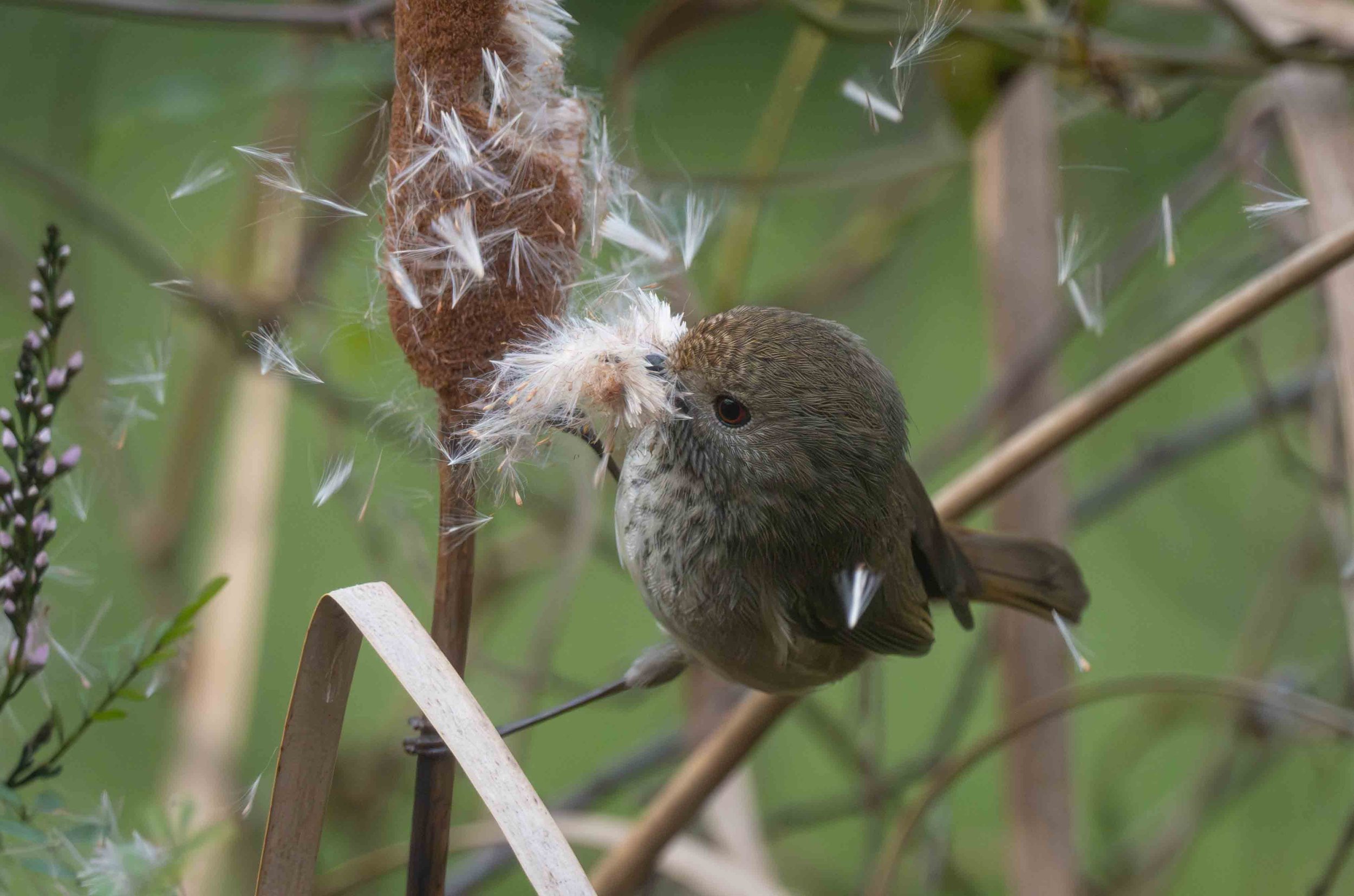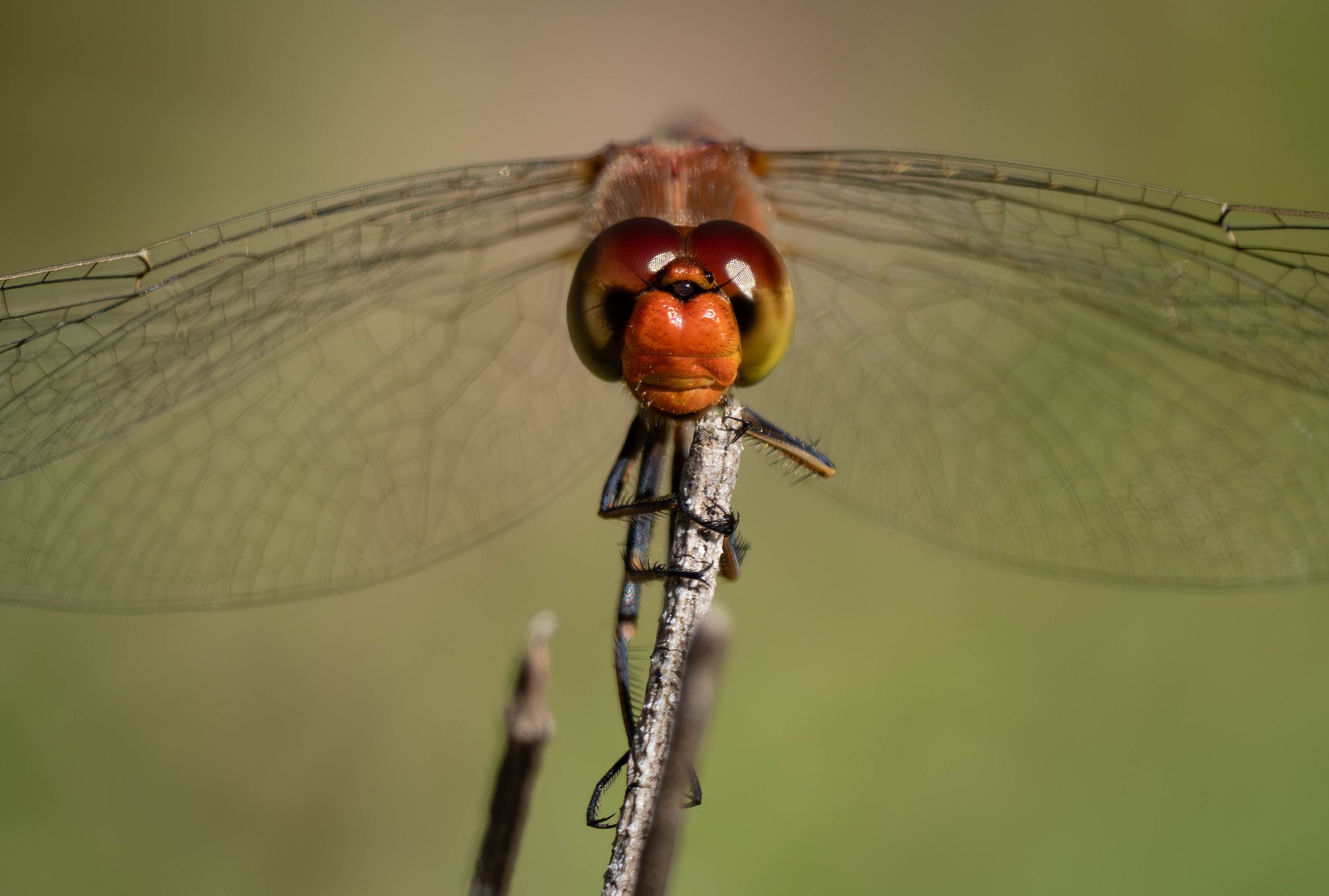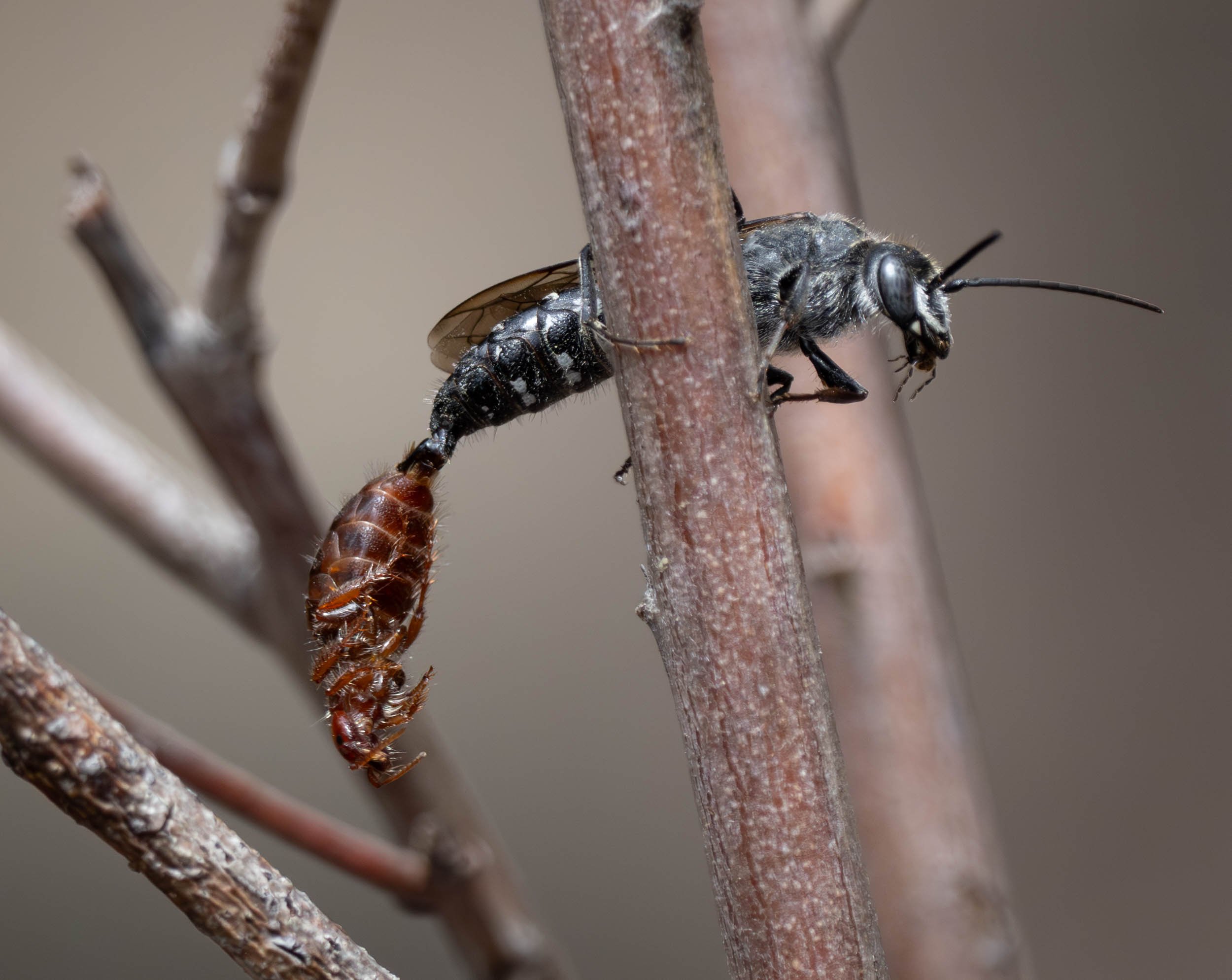Habitat for small birds
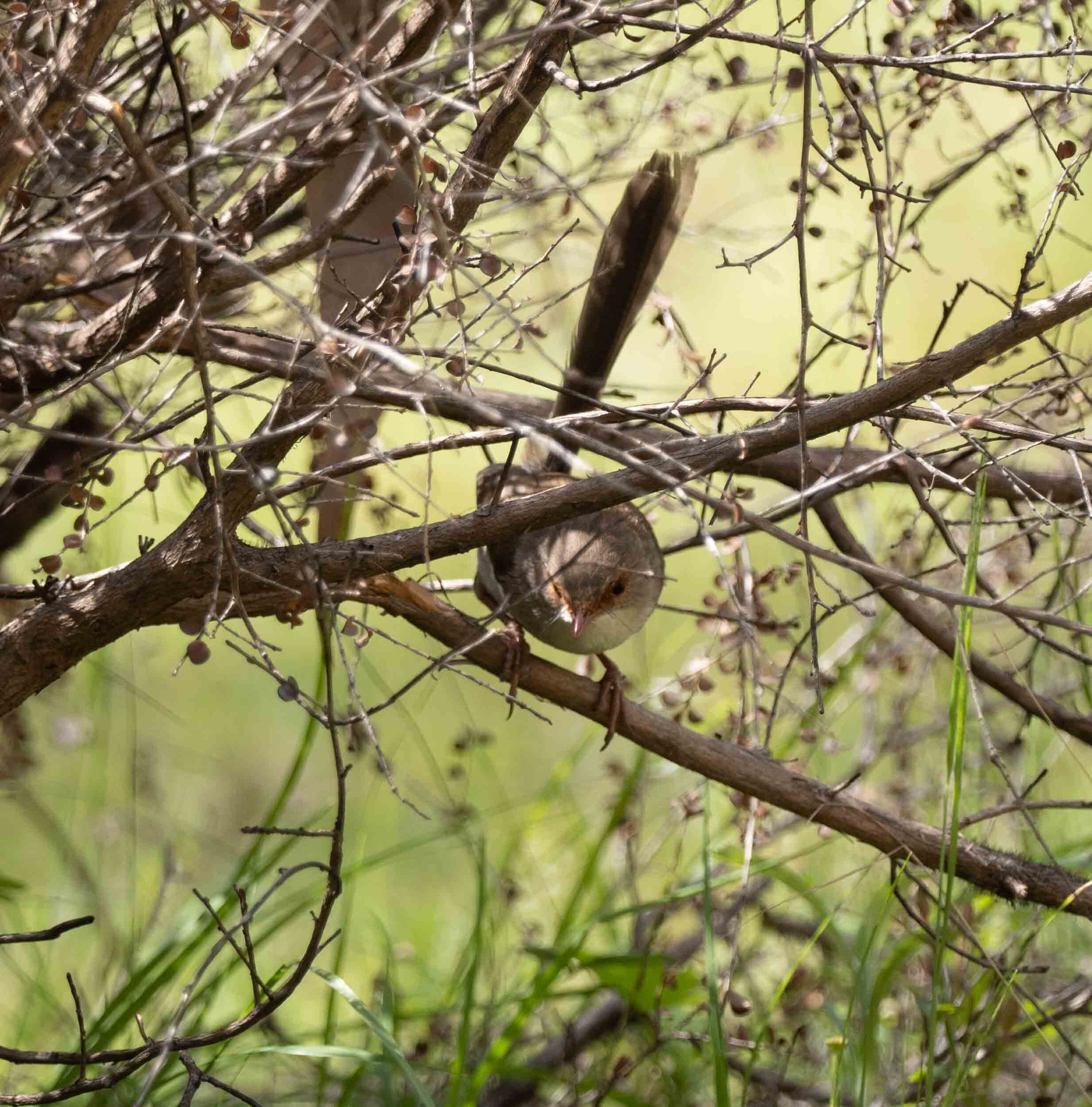
At ground level, the forest foliage is already lush and diverse. Bright green leaves of grasses, sedges, rushes and ferns contrast with colourful flowers of all types. Against a backdrop of black tree trunks the visual effect is dramatically beautiful.
But what about all the standing dead bushes? Why not clear away those that are not resprouting and trim back the dead branches from those that are? Fair questions, and raised by several friends recently.
Dead shrubs provide habitat structure. They are perches for insects and birds, home for spiders, and support for climbing vines.
Female Superb Fairy-wren with a caterpillar, a nuptial gift provided by the courting male just moments earlier (1st Oct, 2020)
Our decision to not ‘clean up’ the forest after the fire was a good one. The small birds are taking full advantage of the protection. This week the female fairy-wren from the photo above chose the tangled branches of a dead tea tree as her nest site. She’s visible in all four photos below … just. Hint: zoom in and look for her red beak (photos 1 & 2) and tail (photo 3).
The nest has grown rapidly since she started just a few days ago. The first materials were spiky twigs, then fine dead grasses, and late yesterday we spotted her with a fluffy white feather. Seems the construction is nearing completion.
Apparently it’s common for the female to take a few days off between the end of construction and the start of egg laying. Understandable … she’s been working very hard. Alone.
There are two males in close attendance but neither gets involved in nest building. One is her mate, the other a hopeful contender. They both follow her as she collects nesting material but otherwise don’t seem to do a lot. Their life is all about the show. They sing, bathe and preen. And they feed – themselves. The female does her own hunting.
Pair bonding involves a good deal of body contact and preening. She gives him a lot of attention … that spectacular head dress requires much work.
In contrast, mating is a quick affair. Pursuit, a flurry of wings, and that’s it. Female Superbs are notoriously promiscuous, so it may be that both males will be fathers soon.
Superb Fairy-wrens are well-known for their collective efforts during breeding, with lots of helpers assisting the breeding pair. Our lone female will have help from the males once the chicks have hatched.
If she’s successful with her first clutch, the troop will grow and she’ll have extra workers to help in rearing a second clutch. But first the nest must remain unnoticed by cuckoos, goannas and snakes. And the spiky twigs must prove defence against marauding currawongs.
All being well, we can expect 3-4 eggs before the month is out, chicks by mid November and fledglings two weeks later. The odds are 50-50. But if this brood fails she has time to try again. Superb Fairy-wrens breed through Spring and early Summer.



























